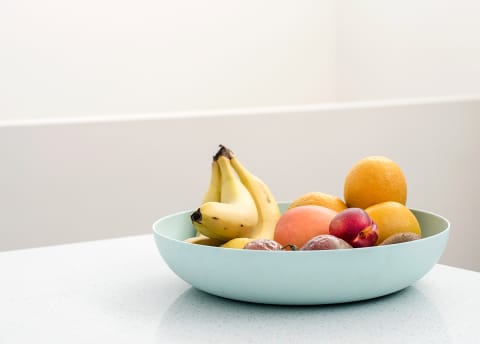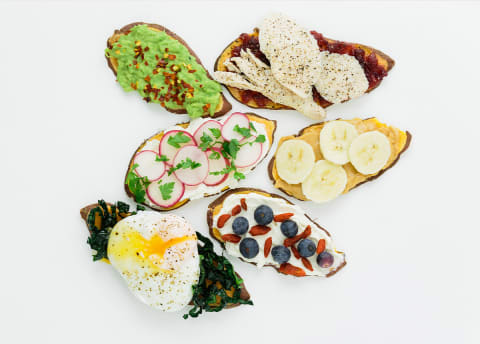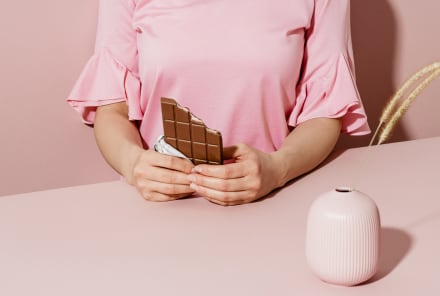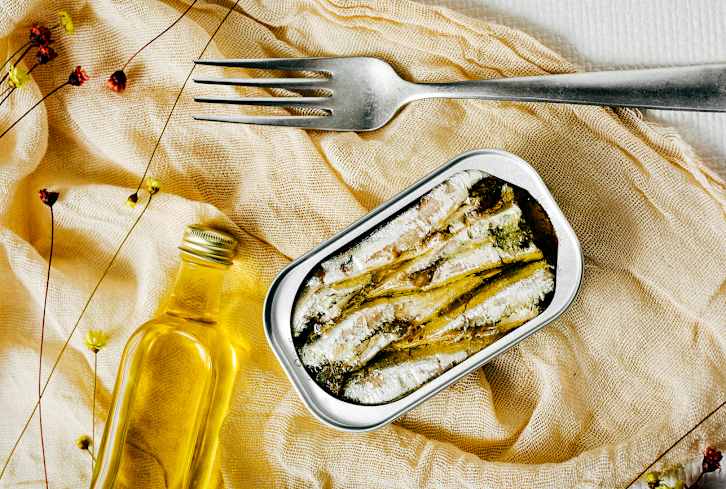Advertisement

If you think you've finally nailed down your skin care routine, you might want to think again—and make some room in your kitchen.
Let's talk minerals. What exactly are they, anyway? In the simplest terms, when discussing nutrition, minerals are chemical elements required as an essential nutrient so that our bodies can perform the functions necessary for daily life. We need certain minerals to not only turn the food we eat into energy but also to build strong teeth and bones and promote healthy-looking skin, lustrous hair, and a host of other benefits.
There's no shortage of beneficial ingredients, but how do you know which ones are best? Ahead, we break down five natural minerals that harbor the biggest beauty-boosting potential and the best foods to get your fill.
Zinc
After iron, zinc is the second most abundant1 trace mineral in our bodies, and besides supporting the immune system, zinc packs major derm powers. The mineral has been shown2 to help with wound healing and lessening inflammatory conditions like acne, and it also regulates sebum production and assists in collagen synthesis, DNA repair, and new cell production. Read: It can help keep your skin looking younger and healthier from the inside out.
Keep in mind your body doesn't store zinc3, so fill up on foods that are rich in the mineral, like legumes, nuts, seeds, eggs, shellfish, and some meats, to make sure you're hitting your daily requirement.
Silica
Silica is the oxide form of silicon4, the third most abundant5 trace element in our bodies, and it plays a key role in bone growth. Silica has also been dubbed the "beauty mineral" because it's an essential ingredient in collagen creation, which improves skin's strength and elasticity, nail growth, and hair health.
While kick-starting collagen production by getting your silica fill from your diet may seem like the way to go—it's found in foods like whole grain bread and pasta, brown rice, oatmeal, bananas, green beans, spinach, mangoes, and even in beer—supplements are actually highly effective.

"One of the issues of getting silica from food is that it's not necessarily bioavailable," says Nicole Paine, RDN, a New York–based registered dietitian. "This means when it’s ingested, stomach acids in your gastrointestinal tract break down the silica, not allowing it to disperse in the body in the most optimal way." And while there are many different forms of silica, Paine explains that taking orthosilicic acid6 (or OSA), the form found in silica supplement FloraSil, is generally recognized as safe and is an easy way to maintain optimal levels of collagen, the building block for healthy skin, hair, and nails.
Potassium
Dry skin sufferers should definitely consider including potassium in their skin care routine, as its deficiency is often to blame for a lack of skin moisture. Found in foods like bananas and spinach as well as the less obvious white beans, potatoes, dates, and other dried fruit, potassium keeps skin hydrated, assists in new cell production to improve dull skin, and acts as a pH balancer. It also helps regulate sebum production, which means it can help reduce the appearance of scars and blemishes.
Magnesium
According to the World Health Organization, 75% of the population is magnesium deficient, which means that not only are we missing out on this mineral7's migraine-relieving, heart health-improving, and digestion-aiding benefits, we're also depriving our skin of a major ally.

Found in foods like tofu, legumes, whole grains, avocados and (yasss) dark chocolate, magnesium also helps improve skin's overall appearance8 by lowering cortisol levels and stabilizing hormone imbalances. Another beauty bonus? Magnesium's innate shimmer means that applying it in gel form to areas like cheekbones and collarbones makes it an effective natural highlighter.
Omega-3s
Polyunsaturated fats like omega-3 fatty acids—found in fan favorites like avocado, almonds, flaxseed oil, and seafood—are not only good for lowering cholesterol and improving heart health, but they're also good for improving your skin9. Omega-3s and their fellow essential fatty acids, omega-6s, can both be amazing moisturizers when applied topically. What's more, consuming foods rich in omega-3 fatty acids deals a major blow to your skin's biggest foe: inflammation. Plus, it helps eliminate stubborn acne. If staying head-to-toe healthy is your goal, polyunsaturated fats should be your go-to.
The information in this article is the opinion of the author and/or individuals quoted and in no way reflects the policies or positions of Flora Health. This is not intended to be a substitute for professional medical or nutrition advice.
9 Sources
- https://www.ncbi.nlm.nih.gov/pmc/articles/PMC2820120/
- https://www.ncbi.nlm.nih.gov/pmc/articles/PMC4120804/
- https://www.ncbi.nlm.nih.gov/pubmed/11115789
- https://www.ncbi.nlm.nih.gov/pubmed/17435951
- https://www.ncbi.nlm.nih.gov/pmc/articles/PMC2658806/
- https://www.ncbi.nlm.nih.gov/pmc/articles/PMC3546016/
- https://www.ncbi.nlm.nih.gov/pmc/articles/PMC4586582/
- https://www.ncbi.nlm.nih.gov/pmc/articles/PMC5637834/
- https://www.ncbi.nlm.nih.gov/pmc/articles/PMC3890980/



















